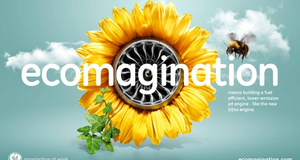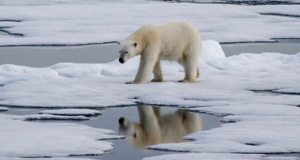Green Alliances: Collaboration Between Businesses and Environmental Advocacy Organizations
By
2012, Vol. 4 No. 07 | pg. 1/2 | »
KEYWORDS:
The notion of radical, restless environmental activists clashing with conservative, dollar-hungry businesses represents a classic way of thinking about the relationship between business and the environment. However as time marches forward, this landscape may be changing while the classic paradigm becomes less relevant. The purpose of this research paper is to evalute the effectiveness of green alliances between environmental organizations and businesses in motivating business to adopt environmentally friendly ethics (Stafford, Polonsky, & Hartman, 2000), and to analyze the characteristics of environmental organizations who serve as competent strategic bridgers. This is done through the analysis of three distinct cases: the 1989 Loblaw-Pollution Probe partnership, the 1992 Foron-Greenpeace partnership, and the 1990 McDonald’s-Environmental Defense Fund partnership. The use of the familiar “command and control” approach to coerce businesses with government interference in order to raise awareness of the damage caused to the external environment proves to be ineffective, resulting often in violence and no long-term plan to introduce environmental consciousness (Livesey, 1999). Instead with the promotion of mutual collaboration, the concept of market based environmentalism emerges where ecological alternatives are made attractive to businesses so they can adopt them independently (Azzone & Bertele, 1994). Under this methodology, businesses are encouraged to introduce and adopt innovative ways that save the environment with communal support from environmental organizations (Gallorotti, 1995). Gallorotti argues that green management in an alliance helps one to learn how to increase efficiency by maximizing outputs, while minimizing costs and waste production, profiting the business in the end (1995).The United Nations World Commission on Environment and Development issued the Brundtland Report in 1987 which defined that future progress needed to be initiated through sustainable development (Hartman & Stafford, 1997). When businesses and environmental organizations collaborate to promote sustainable development, green alliances are born. Herein the scientific expertise of environmentalists joins hands with businesses to come up with practical solutions to environmental issues through the process of strategic bridging. This technique involves that both parties sit down and focus on promoting ecological well being as well as economic development (Livesey, 1999), with each profiting from the experience (Nicola & Polonsky, 1995). The role of environmental organizations in green alliances is to act as strategic bridgers or encourage their partners to adopt environmentally friendly ethics while being aware of their market objectives (Stafford, Polonsky, & Hartman, 2000). Thus the bridger deals with the conflicting interests of businesses of diverse backgrounds bridging them to environmental awakening. Various types of green alliances can be developed between environmental organizations and businesses including product endorsements, corporate sponsorships, product-licensing and task force (Hartman & Stafford, 1997). After researching the environmental costs of a product launched by a firm, an environmental organization can endorse or advocate for that green product. For example, in the alliance between the Canadian retailer Loblaw and Pollution Probe, the environmental organization advertised Loblaw’s green, disposable, non-chlorine-bleached diapers after researching the environmental effect of the product (Nicola & Polonsky, 1995). With corporate sponsorship, the corporation donates money to the environmental organization or undertakes an environmental project/ campaign that the environmental organization is involved in. This is projected in the alliance of S. C. Johnson and the World Wildlife Fund where S. C. Johnson donated over $1 million to World Wildlife Fund’s “We Care for America” fund (Nicola & Polonsky, 1995). Product licensing means the labeling of a product produced by a firm with the logo/ brand of the environmental organization. For example, in the alliance between Natural Fact, a clothing manufacturer and The Friends of The Earth, the clothing was designed featuring the environmental organization’s logo (Nicola & Polonsky, 1995). Hartman and Stafford define a task force as a system wherein environmentalists sit down with firms and point out the necessary changes that will make the firm’s practices more environmentally beneficial (1997). In the alliance between McDonald’s and Environmental Defense Fund, the environmental organization proposed a 42 step action plan on how McDonald’s can reduce its ecological footprint caused by lacking waste management techniques (Hartman & Stafford, 1997). In the 1990s, with environmental issues bombarded at the public, the threatened civilians willed to change at least their consumption patterns opting for greener products to save the earth (Nicola & Polonsky, 1995). With greater demand for greener products, the green label was often misused as issues of credibility, public skepticism and confusion arose among consumers (Azzone & Bertele, 1994). Businesses started marketing green products whose production was environmentally devastating, leading to mistrust. Hartman and Stafford cite an example of these issues arising when fourteen green products were released in Australia in 1990 but because of misleading environmental claims, seven products had to be withdrawn from the market (1997). Establishing green alliances increased consumer reliability in a corporation’s product as Nicola and Polonsky show that in the United States alone, consumers were up to four times more convinced that a product is green if an environmental organization backed up the proposal (1995). With green alliances, greater market access is also available as environmental organizations have large groups of members. For example, the Australian Conservation Foundation had over 80 000 supporters in 1990s and its members received catalogs including a variety of licensed products by the organization (Nicola & Polonsky, 1995). Thus the initiation of green alliances increases credibility for a company in the eyes of the public, widening the market and promoting positive publicity for a firm. To measure the effectiveness of green alliances, Nicola and Polonsky point out that finding the right partner is critical (1995). Furthermore, to assess whether an environmental organization or bridger is effective in building a green alliance, Stafford, Polonsky and Hartman propose establishing a clear agenda, having internal support, being flexible and able to compromise with partner’s demands, being able to cope with threats and having the determination to pursue the outlined goal (2000). Based on these criteria, the dynamics of green alliances are studied by evaluating three distinct cases: the failed 1989 Loblaw-Pollution Probe partnership, the partially- successful 1992 Foron-Greenpeace partnership and the successful 1990 McDonald’s-Environmental Defense Fund partnership. The failed Loblaw- Pollution Probe partnership commenced in June 1989 when Loblaw launched a G.R.E.E.N. products line after surveys showed that 90% of consumers would purchase green products in an attempt to minimize their ecological footprint (Westley & Vredenburg, 1991). Dave Nichol, the director of Loblaw International Merchants proposed the endorsements of the green products line by an environmental group would be effective. The endorsement was secured by Pollution Probe on seven products including fertilizer, topsoil, disposable diapers, dishwashing detergents, recycled motor oil, napkins and non phosphate detergents (Westley & Vredenburg, 1991). Pollution Probe, an environmental organization that conducted research on emerging issues such as the use of DDT, global warming and climate change, was unlike other environmental organizations at the time as inherent in its policy was collaboration with businesses to promote environmental issues (Westley & Vredenburg, 1991). With a 30 member staff and growing internal strife under Collin Isaacs, Pollution Probe accepted the 1 % royalty fee amounting up to $75 000 for the endorsed products (Westley & Vredenburg, 1991). After nearly one month of the launch of the products, in July 1989, Greenpeace, an environmental activist organization often employing the role of a watchdog launched a campaign against Pollution Probe (Westley & Vredenburg, 1991). They demanded that Pollution Probe retract the endorsement of Loblaw fertilizer due to its high toxic halide contents. Despite Pollution Probe confirming that the amount of halides was under standard limits, the onslaught continued ending in the resignation of its director, Collin Isaacs (Westley & Vredenburg, 1991). With a disfigured organization and surmounting internal conflict the alliance dismantled to the loss of both partners. The partially successful Foron-Greenpeace alliance blossomed in 1992 after Greenpeace, an environmental organization known for its radical activism, initiated the Atmosphere Campaign in Germany (Stafford, Polonsky, & Hartman, 2000). This campaign was launched in 1992 as a response to the 1987 Montreal Protocol which called for the industry wide reduction of chlorofluorocarbon use by the 1990s (Stafford, Polonsky, & Hartman, 2000). To propel the campaign, Greenpeace advocated “Green freeze,” a substitute for Freon, chlorofluorocarbon- based refrigeration technology which was ripping apart the ozone layer. Whilst Freon contributed to a wide array of environmental hazards including global warming and climate change, the alternate Green freeze technology was a practical solution. However with no incentives and greater costs of production, the majority of companies did not incline towards its use except the meekly Foron Household Appliances company. Under Treuhand, a German privatization agent, Foron was heading to bankruptcy due to western competition with closure lurking on the horizon (Stafford, Polonsky, & Hartman, 2000). Greenpeace opted to fund Foron if it adopted the Green freeze technology and from there sprang the alliance. With funding from Greenpeace, ten prototypes of the new refrigerator incorporating Green freeze technology were ordered in July 1992 (Stafford, Polonsky, & Hartman, 2000). Before production was under way, Treuhand suddenly announced Foron’s due to failure in the market. Despite this, Greenpeace and Foron held the forbidden press conference on July 16 advocating the prototype refrigerator (Stafford, Polonsky, & Hartman, 2000). With about 200 people including activists, investors and Treuhand personnel, the conference proceeded and resulted in manufacturing of the “Clean Cooler” (Stafford, Polonsky, & Hartman, 2000). After its introduction to the public, over 70,000 orders flushed the reborn Foron (Stafford, Polonsky, & Hartman, 2000). At the same time, enraged German chemical companies released propaganda against the Clean Cooler calling it inefficient and literally a “bomb in the kitchen” (Stafford, Polonsky, & Hartman, 2000). Greenpeace responded by conducting research into its safety, reassuring consumers of its efficiency. For Green freeze, Foron was awarded the Blue Angel award from the German Environment Ministry (Gallarotti, 1995). In 1994, most German manufactures started to employ this technology leading Greenpeace to launch a worldwide campaign advocating Green freeze in countries including China and India (Stafford, Polonsky, & Hartman, 2000). However Foron’s airtime was up as it sagged under competition and filed bankruptcy in 1996 with the refrigerator department bought up by Dutch ATAG Kitchen Group (Stafford, Polonsky, & Hartman, 2000). While Greenpeace sailed the tides of success convincing industries to adopt a “greener” technology, Foron enjoyed martyrdom in the name of Mother Earth.Continued on Next Page » Suggested Reading from Inquiries Journal
Inquiries Journal provides undergraduate and graduate students around the world a platform for the wide dissemination of academic work over a range of core disciplines. Representing the work of students from hundreds of institutions around the globe, Inquiries Journal's large database of academic articles is completely free. Learn more | Blog | Submit Latest in Environmental Studies |


















